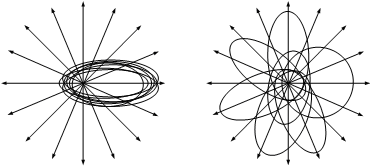There is a risk of achieving to little cohesion in a group of disparate talents, and if there are personality differences, communication within the team is hampered. However, in a homogeneous team there is less learning and creativity.
For the specialization, typical of a good team, it is advantages to recruit team members that complement each other's competence, see figure 1. The combined competence is larger for such a group. A heterogeneous group performs better than a homogeneous.
The compelling direction should ideally deepen the meaning or elevate our purpose in life and it should be challenging to be interesting. Such a compelling direction energizes the team.
A clear direction helps orient the team and align efforts. With possibly positive consequences of the work follows engagement that foster full utilization of knowledge and skill.
An enabling structure starts with a sound project organization, with clear statements of responsibilities, code of conduct, and division of work. The team should not be too large as motivation and engagement usually is larger in small teams.
A well functioning and supportive infrastructure including locations, communication equipment, computers, software, etc are all a part of an enabling structure.
Supportive context in this case means open borders, a free flow of information, and a forgiving atmosphere where mistakes are allowed if they are the result of meaningful risk taking. There should be some kind of reward system.
Expert coaching must take into account the three aspects of group interaction, found by research to enhance effectiveness, namely the amount of effort members apply to their collective work, the appropriateness to the task and situation of the performance strategies they employ in carrying out their work, and the level of knowledge and skill they apply to the work.
Team leader intervention mostly has either of two purposes: to minimize process losses, or to increase process gains. Intervention that addresses effort is motivational in character; its functions are to minimize free riding and to build shared commitment to the group and its work.
Intervention that addresses performance strategy is consultative and intends to minimize thoughtless reliance on habitual routines and to install inventive ways of action that are aligned with task and situational requirements and opportunities.
Lastly, intervention that addresses knowledge and skill is educational in character.



